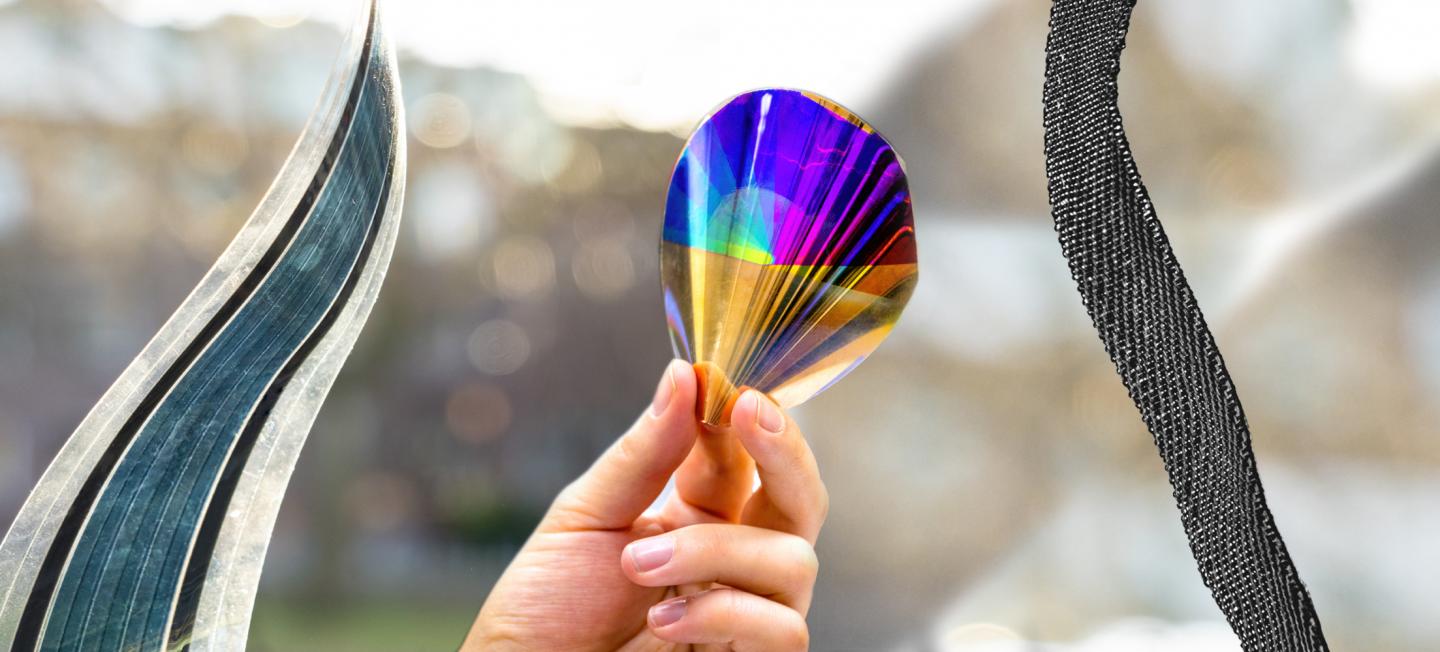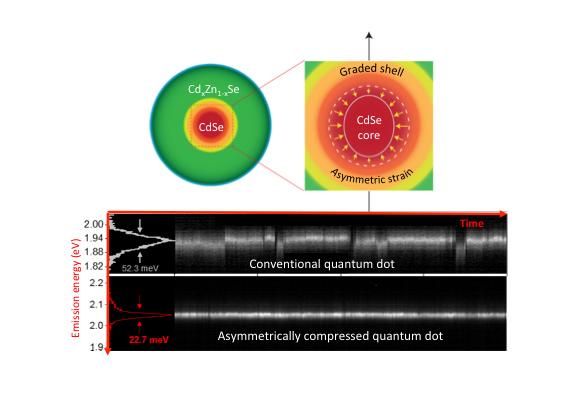
Double doping could improve the light-harvesting efficiency of flexible organic solar cells (left), the switching speed of electronic paper (center) and the power density of piezoelectric textiles (right). Disclaimer: The image may only be used with referral to Epishine, as supplier of the flexible solar cell. For instance: 'The solar cell was supplied by Epishine AB.'

Novel colloidal quantum dots are formed of an emitting cadmium/selenium (Cd/Se) core enclosed into a compositionally graded CdxZn1-xSe shell wherein the fraction of zinc versus cadmium increases towards the dot's periphery. Due to a directionally asymmetric lattice mismatch between CdSe and ZnSe, the core, at top right, is compressed more strongly perpendicular to the crystal axis than along it. This leads to modifications of the electronic structure of the CdSe core, which beneficially affects its light-emission properties. Bottom image: Experimental traces of emission intensity from a conventional quantum dot (upper panel) and a novel asymmetrically compressed quantum dot (lower panel) resolved spectrally and temporally. The emission from the conventional quantum dot shows strong spectral fluctuations ("spectral jumps" and "spectral diffusion"). The emission from the asymmetrically compressed quantum dots is highly stable in both intensity and spectral domains. In addition, it shows a much narrower linewidth, which is below the room-temperature thermal energy (25 meV).